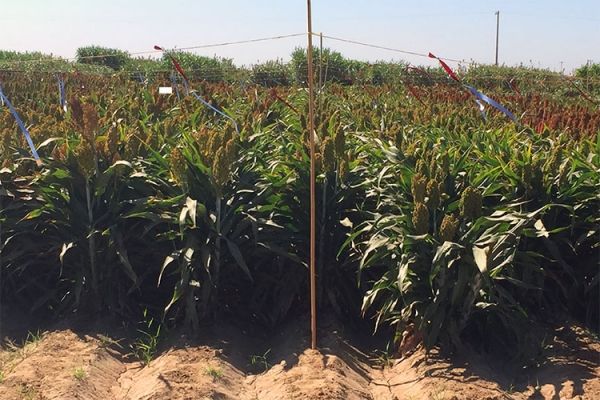Scorching temperatures and parched earth are no match for the sorghum plant — this cereal crop, native to Africa and Australia, will remain green and productive, even under conditions that would render other plants brown, brittle and barren.
A new study published this week in the journal Proceedings of the National Academy of Sciences provides the first detailed look at how the plant exercises exquisite control over its genome — switching some genes on and some genes off at the first sign of water scarcity, and again when water returns — to survive when its surroundings turn harsh and arid.
“Sorghum really is drought tolerant, and if we learn how it is able to be so drought-tolerant, then perhaps we can help some other plants survive in the same way,” said Peggy Lemaux, a cooperative extension specialist at the University of California, Berkeley’s, Department of Plant and Microbial Biology and co-author of the paper.
The massive dataset, collected from 400 samples of sorghum plants grown during 17 weeks in open fields in California’s Central Valley, reveals that the plant modulates the expression of a total of 10,727 genes, or more than 40% of its genome, in response to drought stress. Many of these changes occur within a week of the plant missing a weekly watering or after it is first watered after weeks of no watering.
Continue reading at University of California Berkeley
Image via University of California Berkeley


